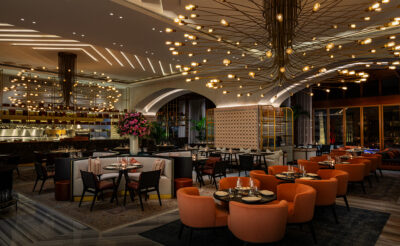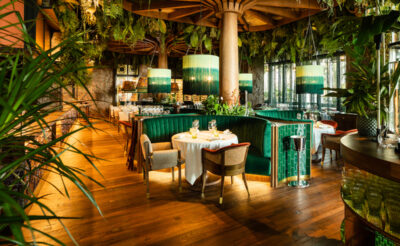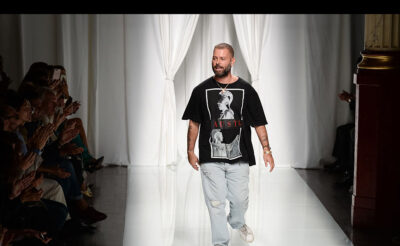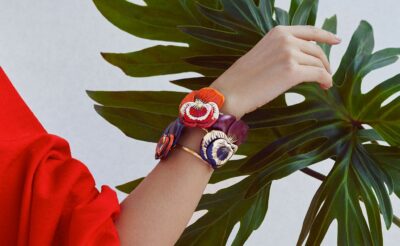Downtown Design and Dubai Design Week return to celebrate design, architecture and innovation. MOJEH meets five Arab female creatives at this year’s editions who aim to shape the region’s design landscape with their work and vision
Wafa Al Falahi
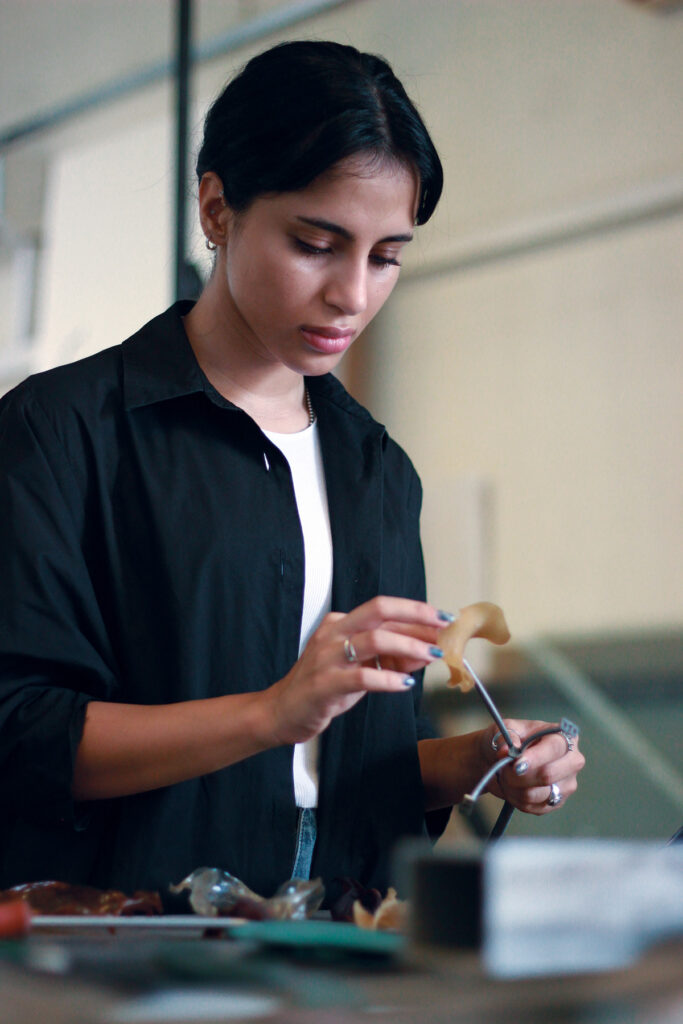
Emirati furniture and interior designer Wafa Al Falahi has been part of the Tanween Design Programme at Tashkeel since its launch in 2013. She, together with 26 UAE-based emerging designers from eleven other countries, will be presenting 35 limited edition pieces at this year’s fair.
“As a furniture designer, I draw inspiration from my personal story and shared experiences. My work revolves around taking cues and influences from existing elements and transforming them into functional and designed pieces,” she says. The multidisciplinary designer is best known for her ability to represent culture, history and science, while her main focus is to delve into creative concepts that are deeply connected to the rich tapestry of the Arab region. By referencing traditions, intricate stories and inspirations from the land, she sheds light on diverse cultural and historical facets. “I always take a multidisciplinary approach, emphasising the fusion of different mediums. My latest work with Tanween is particularly inspired by the rich heritage of the Emirates and the artistry of henna. I chose to create a lighting piece called Roots which symbolises a connection, serving as the nourishing stem of a tree, supplying vital sustenance. They flow like life’s blood, coursing through veins, delivering nutrients to sustain the body. Roots are our heritage, guiding us back to our origins,” she says.
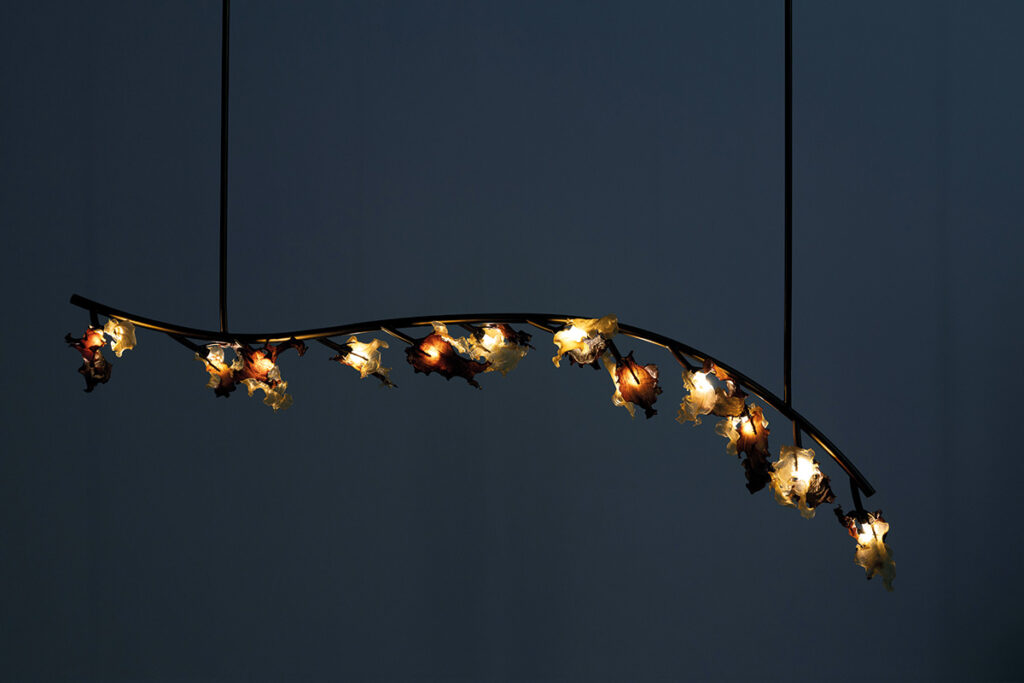
Roots by Wafa Al Falahi
Beginning with conceptual sketches and initial research, Wafa lays the foundation for the subsequent design phases in all of her work, with her creative endeavours including interior design, furniture design, drawing and ceramics. The result of her unique approach is a harmonious fusion of art, culture, history and sciences, represented by lines, textures and gestures. “When I delve into ceramics, I’m captivated by the organic, flowing forms that can be coaxed from clay through the intricate interplay of glazes and firing techniques. In my drawings, I weave historical references seamlessly into contemporary contexts, crafting compositions that spark contemplation and reflection,” she reveals.
However, sometimes it is her memories that guide her creative process, such as that of her grandmother when applying henna to her hair, hands and feet. “This narrative reflects on the profound experience of henna application, a sacred ritual uniting us in a singular space. It embodies the celebration of womanhood’s essence,” she says. To capture this in her limited edition piece, Wafa brings to life a cherished memory by exploring sustainable materials from the Middle East such as biodegradable henna components. “The steel structure’s versatility promotes resource efficiency, showcasing the region’s sustainability potential,” she says.
Neda Salmanpour
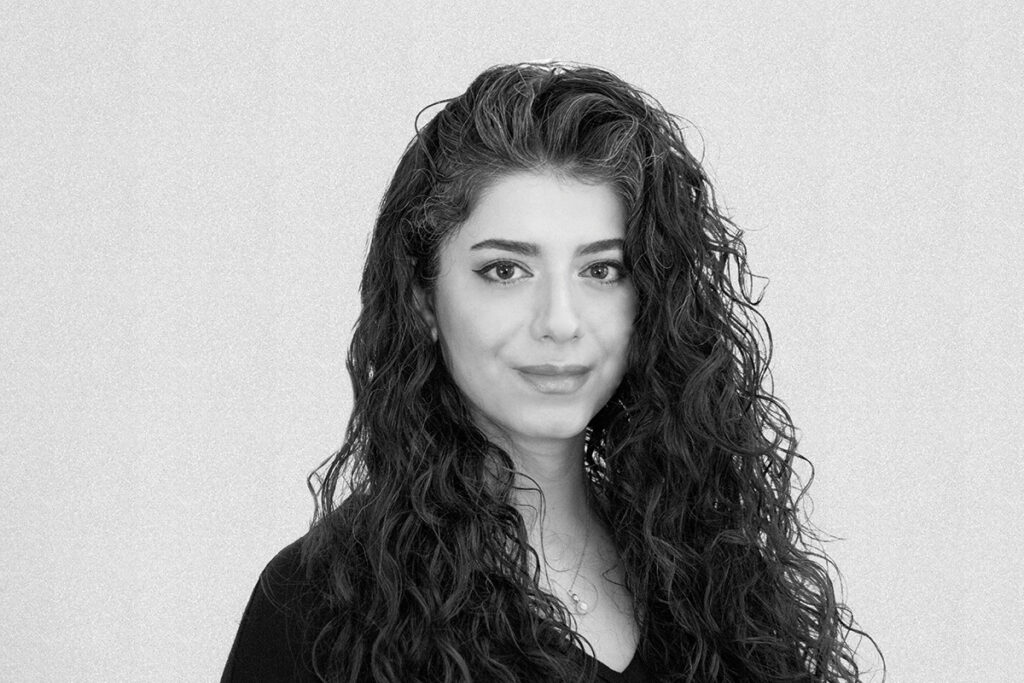
Iranian architect, product designer and researcher, Neda Salmanpour returns for the second consecutive year to Dubai Design Week as part of the 1971 Design Space. Her work follows a sustainable approach to design, wherein the artworks can thrive as distinctive and modular lighting pieces following the event. Aiming to showcase the versatility of both the products and the approach, and effectively merging the realms of product design and artistic installation, Neda delves into the science behind the process of creation.
“As an architect and designer with a focus on Middle Eastern design, my strategic approach is rooted in research and process-based methodology. I refrain from prematurely fixating on a conclusive idea, opting instead to draw from the intricate tapestry of our collective regional design and geometrical legacy as inspiration,” she says. Driven by perpetual curiosity, viewers are invited to make sense of the organic integration of elements, which results in a harmonious synthesis within her unique design process and deliberate strategy.
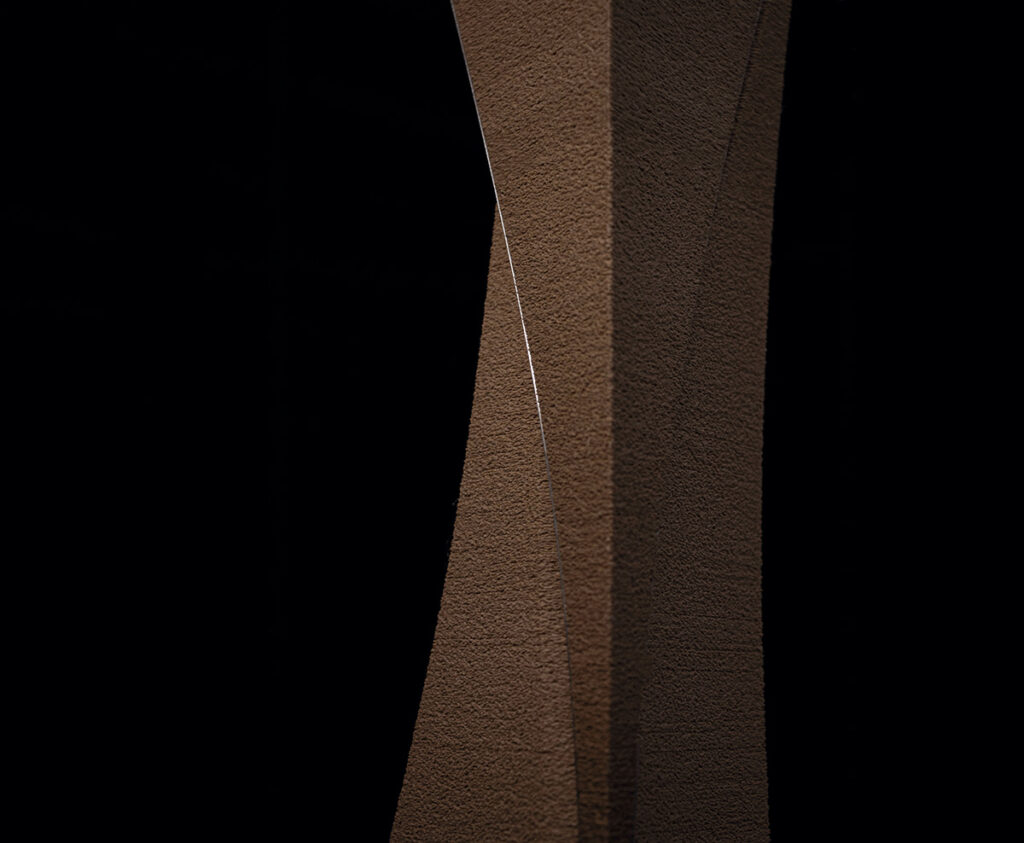
NADD by Nada Salmanpour
The 1971 Design Space, which is a multi-functional space dedicated to all forms of contemporary design, is the perfect platform to showcase Nada’s creations and ideas which are conscious manifestations of her thoughts. Talking about the importance of work that is process-driven, research-based and contemporary, she says: “We do not so much ‘own’ or ‘create’ these ideas, but rather act as vessels, channelling all that we have observed, felt, heard and absorbed. To this end, I make a conscious effort to maintain a perpetual curiosity about the world around us. This ongoing process of re-evaluation and constant examination of what draws me guides my design methodology.”
Creating designs that resonate with the evolving pulse of our surroundings, the award-winning designer and architect has a profound fascination with the intangible intricacies of sand formation patterns. “This design process explores the dynamic shifts and breaks in these patterns under the influence of external forces or entities, providing the inspiration that guides the creative process with the aim of translating these phenomena into tangible, meaningful elements,” she concludes.
Christiana Jabara
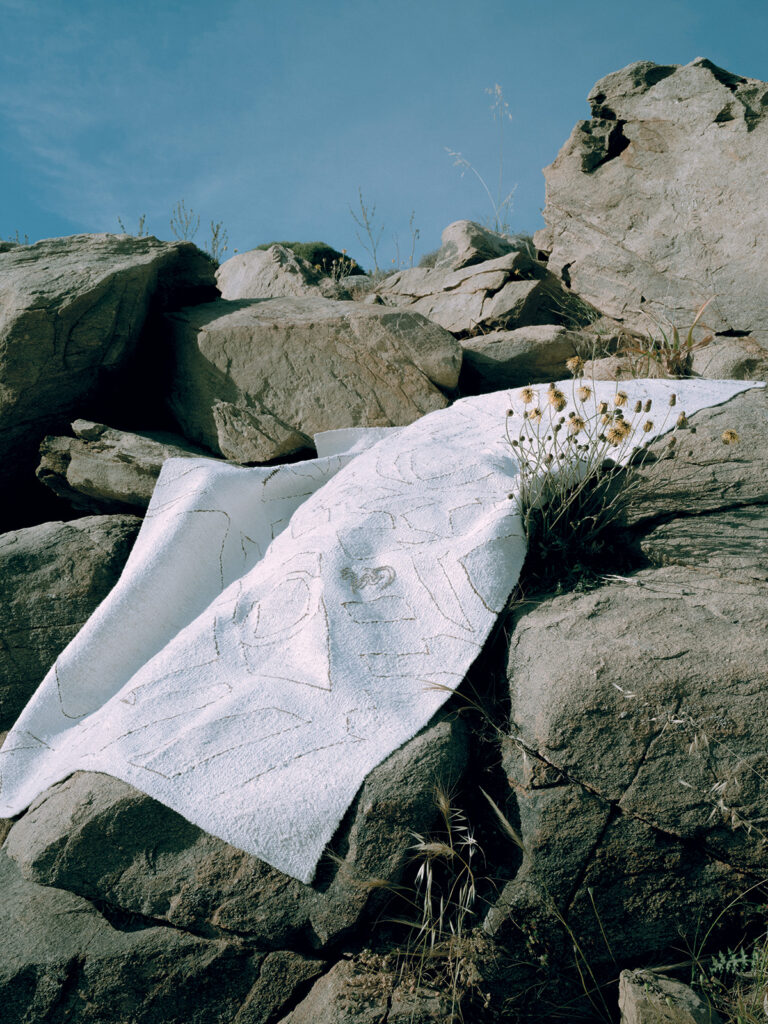
The All Eyes Carpet
Presenting an installation titled Unearthed Voices, Christiana Jabara, Lebanese founder of FAME [Female Artists of the Middle East], is bringing together a multidisciplinary exhibition showcasing various designers with origin stories from across the MENA region. In her debut at the design fair, Christiana’s vision is to bring a unique aspect to the increasingly popular event. “Gathering them together will celebrate the harmonies and interactions between their varied works by combining them to generate an uplifting vision for sustainability in the design world,” she says.
FAME recognises Arab female artists who are underrepresented compared to their male counterparts. In her role as curator for this installation, Christiana focuses on outstanding female designers who have a unique approach towards expressions, ideas and issues. By referencing their roots in the region, each designer embraces a unique vision to represent themselves and their culture. “I wanted to gather designers not only from different countries but also with a range of creative practices, so the audience can encounter their pieces combined together in a way that invites the objects to reflect on one another for fresh stories and sensory encounters to emerge,” explains Christiana about the selection process of designers.
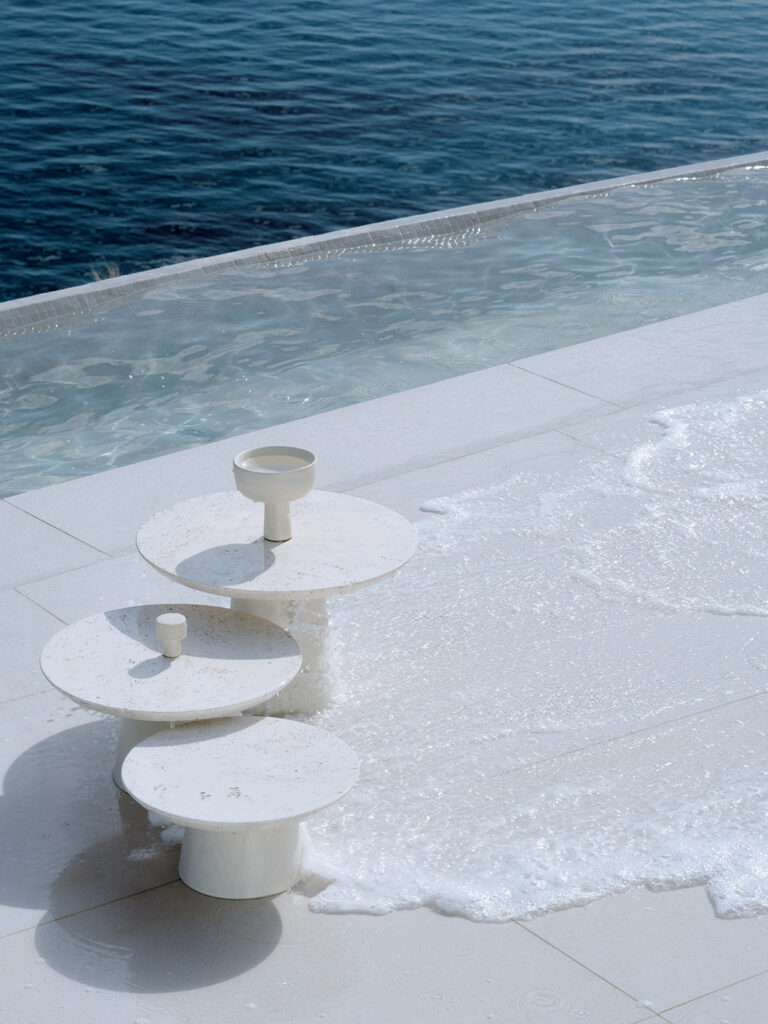
Nostalgia Platters by Saccal Design Studios
Reflecting FAME’s core value of carrying ancient wisdom into the future, its presence at Dubai Design week is a celebration of arts. “We believe in connecting with the land as the source of our ancient identities. Everything we do keeps in mind the dynamics of a positive feedback loop, whether between nature and humanity, or from women to other women,” says Christiana.
Distinctive pieces that will be showcased at the design fair by FAME will include those by Talin Hazbar (UAE/Syria), Saccal (Kuwait), Naqsh Collective (Jordan), Nada Debs (Lebanon) and Carla Baz (Lebanon). “Every designer is using material objects to look at the contemporary identity of our ancient lands in a new light, so the installation offers guests a chance to reflect on something you know and love — and perhaps question too — in a new way,” she says.
Sara Al Rayyes
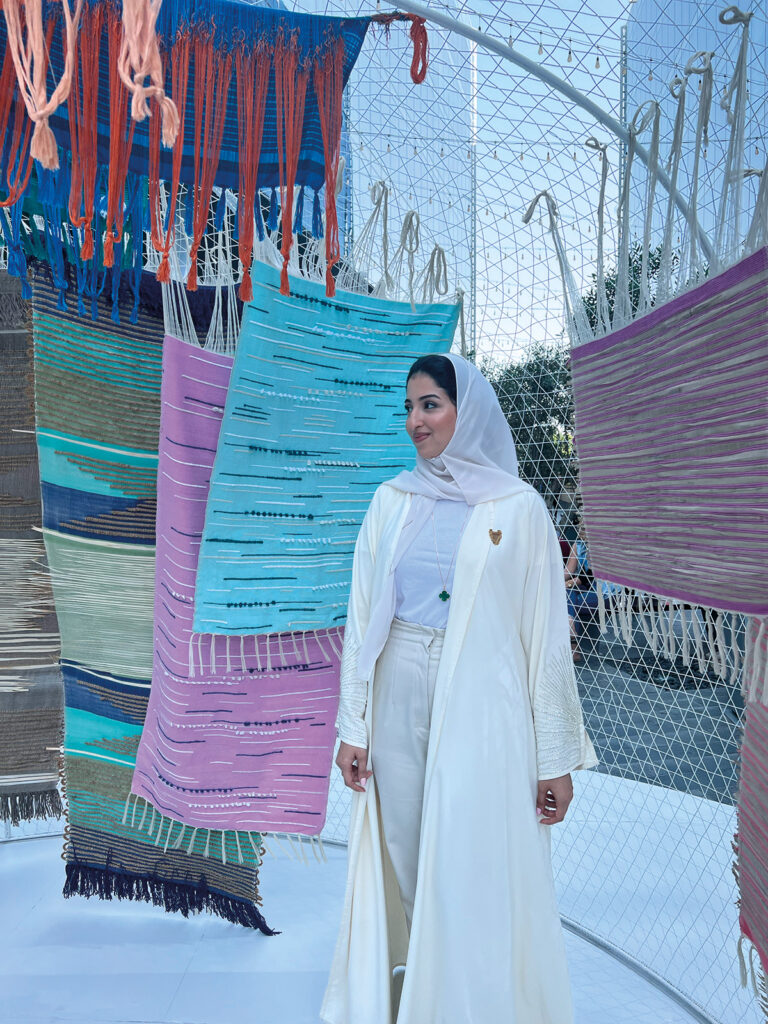
Bahraini architect Sara Al Rayyes returns to Dubai Design Week for a second year. In the previous edition she showcased an installation inspired by Bahrain’s fishing heritage, while this year she’s presenting Blessings of Iridescence, a sculptural work which sheds light on the beauty of Bahraini pearls. “The structure being created this year is slightly more intricate compared to last year’s, presenting a greater level of complexity,” she shares. “This year’s design holds a special place in my heart as it pays homage to my Bahraini roots and my admiration for Bahraini pearls. My vision through this project is to convey the appreciation of the divine gifts bestowed upon us,” she adds.
Known for her ability to connect architecture with culture, Sara believes that such a connection holds great importance, establishing a richer experience with contextual relevance by authentically representing the identity of a country, or the designer themselves. “Designing with contextual relevance or a message has a profound impact on individuals, either by resonating with the conveyed message or by introducing them to new cultures and ideas,” she explains. Her project at this year’s exhibition is a perfect example of how she brings her vision to life, giving viewers a chance to get familiar with culture and history. To capture the essence of Bahraini pearls, Sara presents materials that symbolise the precious beauty and nature of the trade, which are linked to the history of the Gulf region. “The value of pearls in the GCC countries has been immense, as they were once the primary resource for trade before the reliance on oil. Despite their enduring value, pearls have gradually lost their traditional significance, and the younger generation is not adequately exposed to the importance and beauty of this divine gift,” she says. Inspired by the iridescent beauty of mother of pearl, and crafted entirely from sustainable concrete, Sara uses the form of the shell that houses the pearl in a attempt to throw light on its importance in nurturing the pearl, which is nature’s prized possession. Sara’s work is educative in nature and gives a clear message. “Through this project, I aim to not only educate the youth about pearls but also highlight the enduring beauty, strength and value of the mother of pearl. Additionally, by using this durable material, I hope to create new opportunities within the industry, as it can be efficiently utilised for various purposes,” she says.
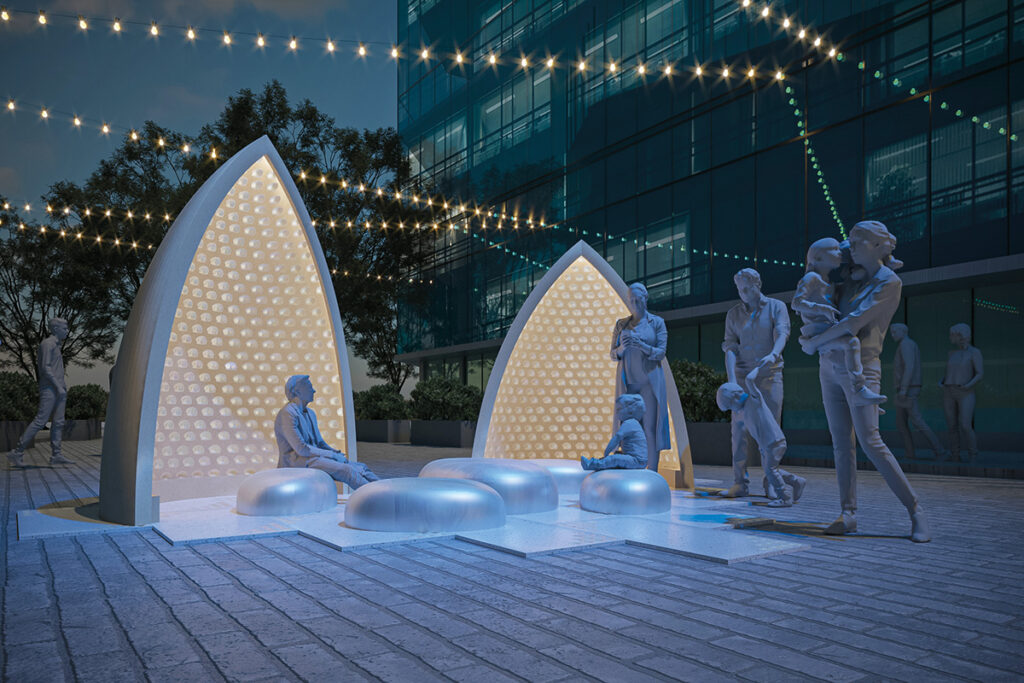
Blessings of Iridescence by Sara Al Rayyes
As an architect from the Middle East, Sara is vocal about her struggle, representing her thoughts on culture and identity and the significance of combining both. Even though her work has received tremendous support and appreciation from individuals and communities, she has worked against all odds to showcase the importance of pushing boundaries to introduce fresh perspectives. “The process of experimentation itself has been interesting yet extremely challenging. Witnessing how individuals engage with and value the outcome of my work has been incredibly rewarding. These reactions reinforce my belief in the value of my ideas and inspire me to continue pushing the boundaries in designing with a limitless creativity, which is why I chose this motto to represent my company, Orient Design Studio,” she says.
Sarah’s installation at Dubai Design Week is an expression of her approach to creative projects. The vault’s interiors gleam with the resplendence of mother of pearl, inviting the observer into an experience inside an oyster. Some of the materials used include ‘dhow’ wood, reminiscent of the traditional dhows used by pearl divers.
Areen Hassan
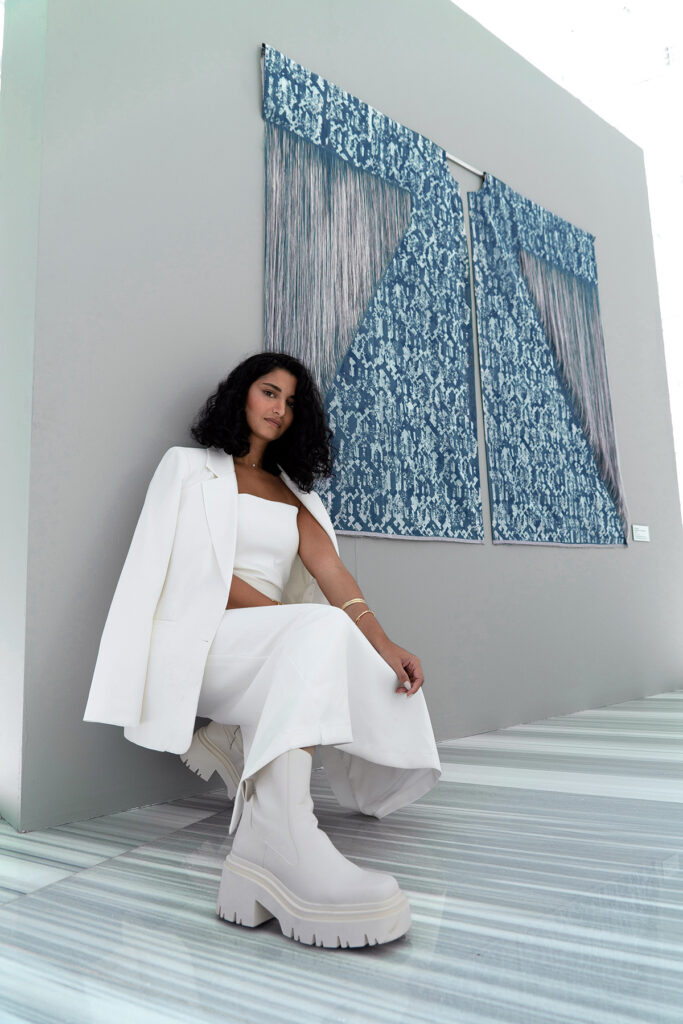
This Dubai-based Palestinian artist and designer, best known for her ability to weave Islamic art into her creative projects, grew up with a passion for textiles and traditions. Handwork, embroidery and colours inspire her to take an innovative approach to design. “With culture and religion as references for my creations, my aim is to go beyond the visual perception of our traditions. My work blurs the boundaries between humans and objects,” she says. Participating in Dubai Design Week for the first time, she brings her vision to a large-scale textile installation entitled Flowing Threads, which encourages viewers to pause and think. “In essence, Flowing Threads reflects my inner world, a visual expression of the emotions, memories and cultural connections that define me,” she says. As an Arab designer, Areen aims to spotlight Arab culture and heritage, hoping to enlighten future generations about traditions such as embroidery from the Levant region. She attempts to modernise this craft by using technology and multimedia, and by reversing the function of the material.
When viewing the installation of unravelled threads that sway with the wind, she offers an introspective experience. She describes this as “a symbolic embodiment of a universe within itself — an experience that enables the observation of the contents to symbolise the contrast between being complete and incomplete, perfect and imperfect.” Capturing flexibility, functionality, colours and a meticulous hand technique, the installation captures attention for its ability to flow freely with the wind, revealing the lightness of the threads, resembling the fluidity of our changing selves over time.
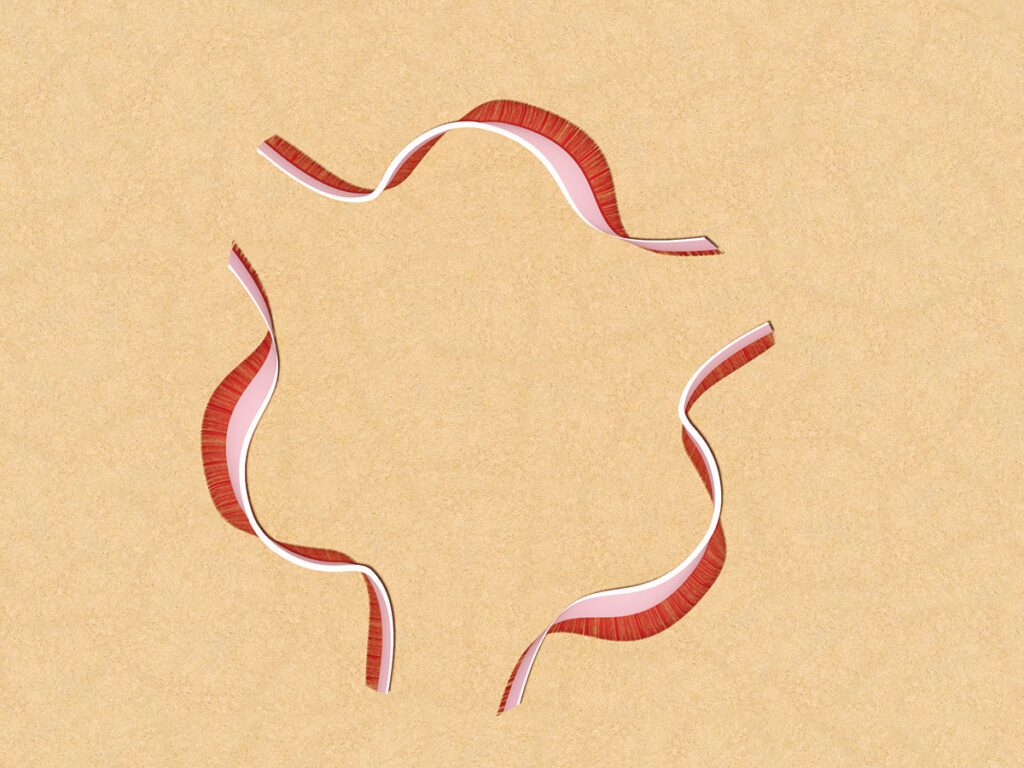
Flowing Threads by Areen Hassan
A recipient of the 2019 Justus Brinckmann Incentive Award, Areen has been widely recognised by international museums including MK&G in Germany. The museum purchased her Eden piece for its Islamic Department, which will travel the world as a representative of Middle Eastern culture. “Inspired by elements of the mosque, I combined geometric and calligraphy motifs into abstract shapes and used the placement composition method to convert the mosque’s architecture into a creative symbol of spiritual life. The composition symbolises spiritual life and communication without a physical space,” she says.
Her work has also been sought after by retailers including H&M Sweden, Hanno Stuff, Eloquii, Guarisco, Noisy May, Atoll Palme, Bora Aksu, TJX, Cole Hahn, Olsen and Mille Mailles, among others.
Dubai Design Week runs from 7-12 November, with Downtown Design running from 8-11 November as Dubai Design Week’s anchor event. Both take place at the Dubai Design District (d3) Waterfront Terrace.
Read Next: Discover The Home Decor And Jewellery Brand Created By Refugee Artisans
